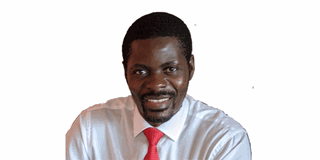Prime
The myth of the NRM political party

Author: Moses Khisa. PHOTO/FILE
What you need to know:
- As soon as he was discharged from service, he launched into opposition politics and has remained there for more than two decades.
A serving army officer has dared the ostensible ruling party. It all sounds utterly unreal. The last time a uniformed senior officer, Col Kizza Besigye, criticised the political status quo, he was roundly denounced and only narrowly survived prosecution in the army court martial.
As soon as he was discharged from service, he launched into opposition politics and has remained there for more than two decades. A few years later in 2005, Brigadier Henry Tumukunde, then an army representative in parliament and had served as head of the Chieftaincy of Military Intelligence and commander of the army’s Fourth Division in Gulu, made comments on a radio talk-show critical of removing presidential term limits. He was swiftly arrested, held in detention for more than a year and stayed on trial for almost 10 years!
For more than a year now, a three-star General, recently elevated to four-star and was Commander of Land Forces, General Muhoozi Kainerugaba, has done what no other army officer ever did – freely and repeatedly engage in public speak totally outside of the bounds of a serving officer.
From mundane comments on domestic politics, including chiding opposition figures and chastising veterans of the ruling group like Gen Kahinda Otafire, to sensitive issues of foreign policy and regional security, Gen Kainerugaba is literally not bound by the code of conduct of the Uganda People’s Defence Forces (UPDF) and the laws governing the armed forces.
All in full view on Twitter, a more open and expanse public platform than an FM radio station in Kampala.
With a flurry of Tweets, week in-out, it’s difficult to keep track of controversial and unsettling statements by Gen Kainerugaba. But then last week he aimed closer home, shooting directly at the ruling organisation, the National Resistance Movement (NRM), roundly denouncing it as ‘probably the most reactionary organisation in the country’.
This denunciation of the NRM is not accidental. But how in the world can a senior army officer so openly and brazenly attack the ruling party? Never mind we don’t know exactly what to him makes NRM a reactionary organisation.
Well, we have to start with the obvious: Muhoozi has said whatever he wants and got away with everything primarily because he is a First Son. There is no other way to see this. No other person can make inappropriate statements on foreign policy issues, casually comment on the army’s standing and sensitive security matters, and directly hit at the ruling party without facing dire consequences. It has never happened in Museveni’s Uganda.
Muhoozi’s ridicule of Uganda’s ruling organisation should prompt us to revisit the status of the NRM. Whatever he meant by ‘reactionary’, the bottom-line is that the NRM is not a political party. It has had a convoluted itinerary and is without a clear identity today.
The NRM was a guerrilla rebel group that built an army to fight for state power. It had a hierarchy and an organisational form through which it executed its guerrilla campaign and mobilised the public.
Although it had an external committee comprised of civilian leaders with Mr. Matthew Rukikaire as the head, the NRM was essentially a military organisation with military ethos, structures and modus operandi.
When it captured power, the NRM and the entirety of its structures became the government with the army as the core and foundation of establishing a new system of rule starting in 1986.
Throughout the first two decades of Museveni’s rulership, from 1986-2005, the NRM was the government and the government was the NRM with Museveni at the centre and the ultimate authority.
During this time, the NRA rebel group had become the UPDF, and structures of rebel governance that initially operated in the war zones in central Uganda became the basis for a central government and countrywide decentralised governance through the local council system. All this was conjured up into what was called the NRM/Movement/No-Party system of government. So, up to this point, in 2005, the NRM had not existed as a political party, rather it had been a rebel group and later became a government built on a military organisation. Once in government, the NRM had no independent existence.
Then there was a half-hearted attempt to create a party by administrative fiat, absurdly called the National Resistance Movement Organisation (NRMO) to simultaneously differentiate it from the NRM system that supposedly coming to an end while asserting that the ‘new’ political organisation was the ruling party. This was sheer deception. I recall the scampering to clean up this mess by walking back the NRMO label and insisting it was NRM. But this NRM really never took off as a political party. Instead, what we have had since 2006 is the government and state of Uganda under the full control of Mr Museveni fighting opposition parties. What is called the NRM does not operate through its own organisational and bureaucratic infrastructure.




